Glass manufacturers use various processes to produce glass. Silica is the most important ingredient; however, most glass has sodium carbonate and limestone. Green glass is caused by impurities in the sand or silica. This is easily corrected by adding various components to adjust the glass colors and properties. Read More…
S & S Optical has been leaders as glass fabricators in a variety of industries and markets for over 50 years. We offer a variety of different glasses to fit all of your needs. Also, we have a multitude of capabilities and services to offer-polishing, grinding, edging and more. To learn how we can fabricate your parts contact us today for a quote. We care about customers and quality service.
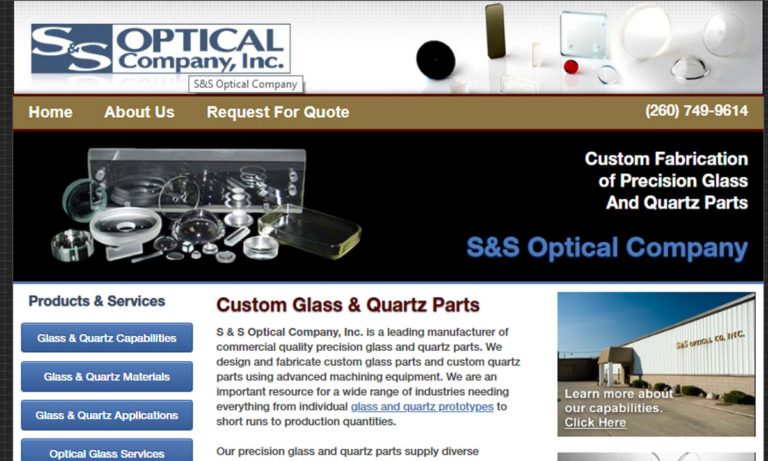
Established in 1947, we have been providing glass cutting using very precise tolerances in order to ensure that our products are among the best. Our skilled designers and technicians are available around the clock in order to work with you from design to delivery to ensure that you are receiving a product that will fit your needs perfectly! For more information on what we may be able to do for...
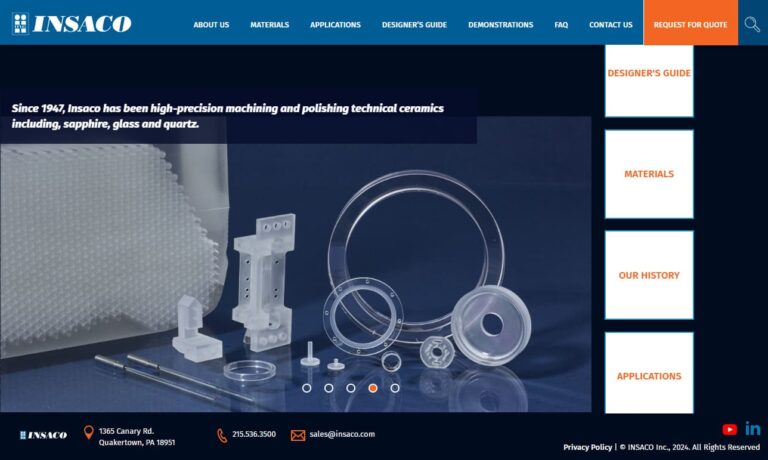
Founded in 1990, Technical Glass Products is a fabricator of Fused Quartz Glassware. We maintain a broad inventory of labware, flat stock, rod and tubes in addition to providing custom fabrication using state of the art equipment to suit your needs.

Glass cutting is a varied industry, and we have done it all for the past 50 years. We believe in manufacturing high quality glass products that will exceed customer expectations every time.
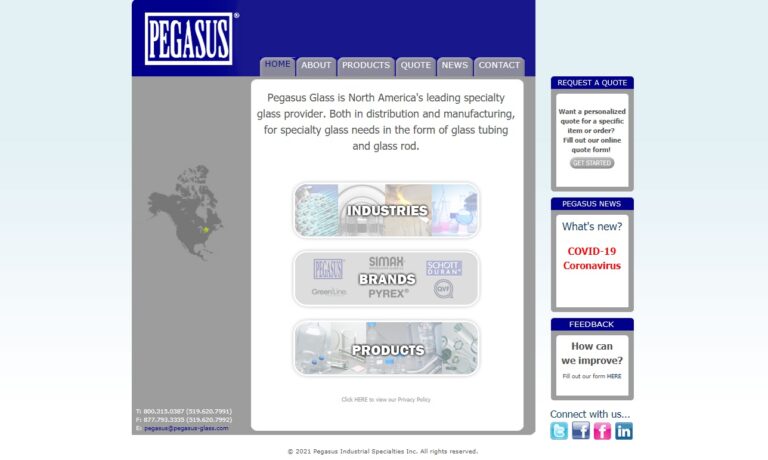
More Glass Manufacturer Manufacturers
Glass production is a centuries-old craft, originating as far back as the era of the Egyptian Pharaohs, and has evolved into a highly advanced industrial process. Today, glass manufacturing plays a vital role in a wide range of industries, including construction, automotive, electronics, pharmaceuticals, and consumer goods. As one of the most versatile materials available, glass can be engineered to have diverse physical, chemical, mechanical, and optical properties, making it indispensable for everything from architectural applications to high-performance optical glass in scientific instruments.

How Glass is Made
The glass production process begins with transforming basic raw materials through precise chemical and thermal techniques. Modern glass manufacturers employ state-of-the-art technology to control the composition, structure, and performance of the finished product. Let’s explore each stage of the manufacturing process and how it impacts the quality and characteristics of the glass:
Batching: Preparing Raw Materials
Batching involves the careful mixing and weighing of essential raw materials, most commonly silica sand (the primary source of silicon dioxide or SiO2), limestone (calcium carbonate), and soda ash (sodium carbonate). The purity and proportion of these glassmaking ingredients are critical to determining the material’s final properties. For specialty glass, additional oxides—such as magnesium oxide, aluminum oxide, or boron oxide—may be included to enhance specific traits like durability, chemical resistance, or optical clarity. Manufacturers remove impurities, such as excess iron, to produce high-clarity glass, especially for applications like display screens and architectural glazing.

Refining: Creating Homogeneous Glass Melts
In the refining stage, the blended raw materials are melted together at high temperatures to create a homogenous molten glass. Most commercial glass is based on soda lime glass, but other types, like borosilicate glass or phosphate glass, require different base components. The refining process removes bubbles and ensures even distribution of additives, resulting in a uniform composition crucial for demanding applications such as laboratory glassware and precision optical glass.
Heating: Achieving the Amorphous State
To form glass, the mixture is heated to approximately 1700°C (3000°F) in a refractory furnace. This intense heat causes the raw materials to lose their crystalline structure and transition into a unique “amorphous solid” state—a defining characteristic of glass. Rapid cooling after melting “freezes” the molecules in a disordered arrangement, which gives glass its transparency, hardness, and brittleness. The precise temperature control at this stage is vital for producing specialty glasses with tailored properties, such as heat-resistant or chemically inert glass.

Tin Bath: Forming Flat Glass by the Float Process
Most architectural and automotive glass is produced using the float glass process, where molten glass is poured onto a bath of molten tin. This allows the glass to spread out and form a perfectly flat ribbon with uniform thickness. The glass solidifies as it cools on the tin bath, resulting in high-quality, distortion-free panes ideal for window glass, mirrors, and glass facades. Manufacturers can precisely control the flow of glass to achieve custom thicknesses for different applications.

Coating: Enhancing Performance and Efficiency
After the glass ribbon has cooled, various coatings may be applied to improve its functional properties. For example, Low-E (Low Emissivity) coatings are often added to enhance energy efficiency by allowing visible light to pass through while reflecting infrared heat. Hard and soft coatings can also provide scratch resistance, anti-glare, or self-cleaning properties, making coated glass ideal for energy-efficient windows, solar panels, and high-specification architectural projects. Looking for specialized coatings? Explore glass coating solutions for your next project.
Annealing: Relieving Internal Stress
Once formed, glass sheets are gradually cooled in a process known as annealing. This is done in a long oven called a lehr, which features multiple temperature zones. Annealing relieves internal stresses that could otherwise cause the glass to crack or shatter spontaneously. The specific annealing regimen depends on the glass type, thickness, and intended use—critical factors for safety glass, automotive glazing, and tempered glass products. Interested in the safety advantages of properly annealed glass? Learn more about tempered glass benefits.

Three Types of Glass Construction
Modern glass fabrication methods have given rise to three fundamental types of flat glass construction, each engineered for specific performance and safety requirements. Understanding these types is essential for selecting the right glass for your project, whether you’re designing a skyscraper, a storefront, or a vehicle windshield.
Monolithic Glass: Single-Pane Simplicity
Monolithic glass consists of a single, continuous sheet of glass. It is the most basic form of glass construction and is widely used for interior partitions, picture frames, and budget-conscious window installations. While monolithic glass is cost-effective and easy to process, it offers limited thermal insulation and safety compared to more advanced constructions. Considering monolithic glass for your project?

Laminated Glass: Enhanced Safety and Security
Laminated glass is constructed by fusing two or more glass panes with an interlayer, most commonly polyvinyl butyral (PVB). This interlayer holds the glass together if broken, greatly enhancing safety by preventing dangerous shards from scattering. Laminated glass is the material of choice for automotive windshields, hurricane-resistant windows, skylights, and security glazing in banks and airports. It can also provide sound insulation and block up to 99% of UV radiation, protecting interiors from fading and improving occupant comfort. Want to compare laminated glass options? Start your search here.

Insulated Glass: Superior Thermal and Acoustic Performance
Insulated glass units (IGUs) consist of two or more glass panes separated by a sealed air or inert gas-filled space. This construction dramatically reduces heat transfer and sound transmission, making insulated glass the industry standard for energy-efficient windows, curtain walls, and facade systems. The air gap can be filled with argon or krypton gas for even better insulation. IGUs may also incorporate low-E coatings or tinted glass to further enhance energy savings and occupant comfort. Curious about IGUs for your next building project? See insulated glass options.

Common Glass Compositions and Their Applications
Different glass chemistries are tailored to meet the performance demands of various industries. The selection of a glass composition depends on factors such as thermal stability, mechanical strength, chemical resistance, and optical performance. Below, we highlight the three most common glass types used in commercial and industrial applications:
Soda Lime Silica Glass (CaHNaO2)
Soda lime silica glass is the most widely produced glass type, accounting for up to 90% of all glass manufactured globally. It is used to make everyday products such as bottles, jars, window panes, tableware, and greenhouse glazing. Its popularity among manufacturers is due to the ready availability of raw materials, low production costs, and excellent workability. However, soda lime glass is less resistant to thermal shock and chemicals than other varieties, making it less suitable for demanding environments. Manufacturers often enhance soda lime glass through tempering or chemical strengthening for applications requiring improved safety or durability. Not sure which soda lime glass is right for you? Browse soda lime glass suppliers.
Borosilicate Glass (SiO2, B2O3)
Borosilicate glass is prized for its outstanding thermal resistance, chemical durability, and low thermal expansion. This makes it the material of choice for laboratory glassware, cooking utensils (like Pyrex®), pharmaceutical packaging, industrial sight glasses, explosion-proof lighting, and aerospace components. Borosilicate’s ability to resist sudden temperature changes and aggressive chemicals makes it indispensable for scientific and industrial settings. Are you evaluating borosilicate glass for your project? View borosilicate glass options.
Phosphate Glass (P2O5)
Phosphate glass is formulated primarily from phosphorus pentoxide and can be engineered with various additives to achieve unique properties. It is valued for its specialized optical applications—such as laser host materials and optical amplifiers—because of its high transmission in certain wavelength ranges. Phosphate glass is also resistant to hydrofluoric acid and exhibits low thermal conductivity. When doped with rare earth elements or iron oxide, it can absorb or transmit specific frequencies of light, making it a key component in advanced photonics and fiber optics.



Factors to Consider When Selecting Glass for Your Project
Choosing the right type of glass is critical for performance, safety, longevity, and overall project success. When evaluating glass products or custom glass fabrication, consider the following key factors:
- Application: Will the glass be used for structural, decorative, protective, or optical purposes?
- Thermal Performance: Does the project require insulation, resistance to thermal shock, or temperature stability?
- Safety and Security: Is impact resistance, shatterproof performance, or bullet resistance required?
- Optical Qualities: Are light transmission, anti-glare, or UV-blocking properties needed?
- Chemical Resistance: Will the glass be exposed to corrosive environments or aggressive chemicals?
- Durability: What level of abrasion, scratch resistance, or weathering is necessary?
- Regulatory Requirements: Does the glass need to comply with building codes, automotive standards, or industry certifications?
- Budget and Lead Time: Are there cost constraints or delivery deadlines to consider?
Still have questions about which glass type is best for your needs? Contact our glass specialists for personalized recommendations.
Benefits of Working with the Right Glass Manufacturers
Partnering with an experienced and reputable glass manufacturer ensures you receive products that meet your specifications, quality standards, and project timelines. Leading manufacturers offer:
- Custom fabrication for unique shapes, sizes, and edge finishes
- Advanced coatings to improve energy efficiency, safety, or aesthetics
- Precision glass cutting and polishing for scientific, industrial, and architectural applications
- Glass tempering and strengthening to enhance durability and impact resistance
- Expert guidance on selecting the right materials, compositions, and constructions
- A comprehensive range of certifications and compliance with domestic and international standards
- Responsive customer support and reliable delivery for both large-scale and specialty projects
Looking to compare leading glass manufacturers? Browse our directory to find suppliers that match your requirements.
Key Use Cases and Industry Applications for Glass
The versatility of glass is unmatched, making it the material of choice for an incredible range of applications. Some of the most common industry uses for glass include:
- Architecture & Construction: Windows, curtain walls, facades, skylights, balustrades, and interior partitions
- Automotive: Windshields, side and rear windows, sunroofs, mirrors, and headlight covers
- Electronics: Smartphone and tablet screens, display panels, optical fibers, and circuit substrates
- Pharmaceuticals & Life Sciences: Vials, ampoules, syringes, laboratory glassware, and optical lenses
- Solar & Energy: Photovoltaic panels, solar thermal collectors, and insulating glass for efficiency
- Aerospace & Defense: Aircraft canopies, cockpit displays, bulletproof and blast-resistant glass
- Consumer Products: Tableware, cookware, drinking glasses, lighting, and decorative features
- Specialty Applications: Laser optics, fiber optics, photonics, scientific apparatus, and medical devices
Need help identifying the right glass for your specific application? Explore application-specific guides or reach out to our experts for in-depth assistance.
How to Choose a Glass Manufacturer: Questions to Ask
To ensure the best results when sourcing glass manufacturing services, it’s important to ask potential suppliers the right questions. Consider the following:
- What types of glass do you specialize in?
- Can you provide custom fabrication or finishing services?
- Do you offer product samples or prototypes?
- What are your lead times for standard and custom orders?
- Are your products certified to relevant industry standards?
- What is your experience with projects similar to mine?
- Can you assist with design, material selection, or performance optimization?
- What support do you offer after the sale?
For a step-by-step guide on evaluating glass suppliers, see our glass buying guide.
Choosing the Proper Glass Manufacturers Company
To achieve the best outcome when purchasing glass products or custom fabricated glass, compare several leading glass manufacturers using our Glass Manufacturers Directory. Each company profile highlights their expertise, product offerings, certifications, and unique capabilities. Use the built-in contact forms to request quotes, ask technical questions, or schedule consultations directly with suppliers. Our website previewer lets you review each manufacturer’s site for a quick overview of their specialties, and our easy RFQ form enables you to contact multiple companies simultaneously—streamlining your vendor selection process.
Still unsure where to start? Contact our team for personalized recommendations or to discuss your unique requirements with experienced glass industry professionals.
Glass Manufacturing FAQ: Your Top Questions Answered
- How is tempered glass different from standard glass? Tempered glass is heat-treated to increase its strength and safety. If broken, it shatters into small, blunt pieces rather than sharp shards, making it ideal for safety-critical applications like doors, shower enclosures, and automotive windows.
- What is the difference between laminated and insulated glass? Laminated glass features an interlayer for security and safety, while insulated glass consists of sealed panes with an air or gas gap for superior thermal and acoustic insulation.
- Which glass is best for energy efficiency? Insulated glass units (often with Low-E coatings and inert gas fill) provide excellent thermal performance, reducing heating and cooling costs in buildings.
- Can glass be recycled? Yes, most glass can be recycled indefinitely without loss of quality. Many manufacturers use recycled glass cullet to reduce energy consumption and environmental impact.
- How do I specify glass for custom projects? Consult with your manufacturer to determine the right thickness, composition, coatings, and fabrication methods to meet your application’s safety, performance, and aesthetic requirements.
Looking to learn more about glass production, applications, or sourcing? Browse our FAQ for detailed answers or connect with our industry experts for comprehensive guidance.

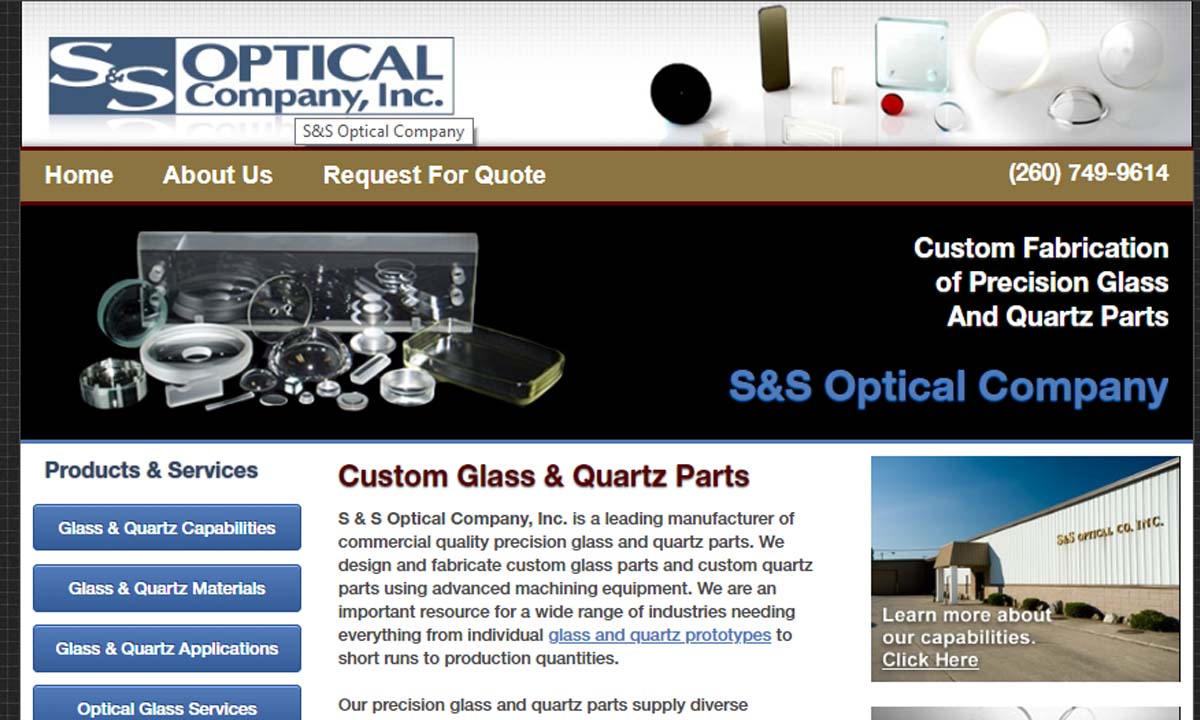
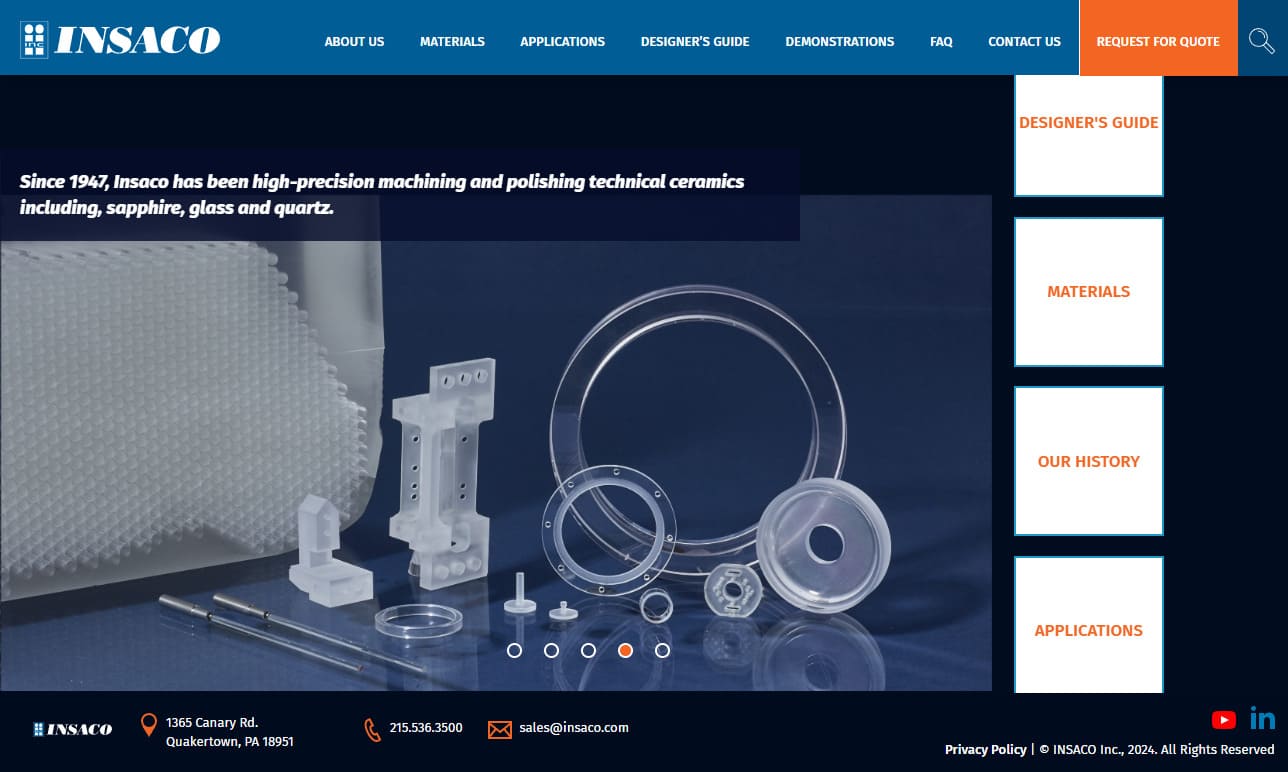
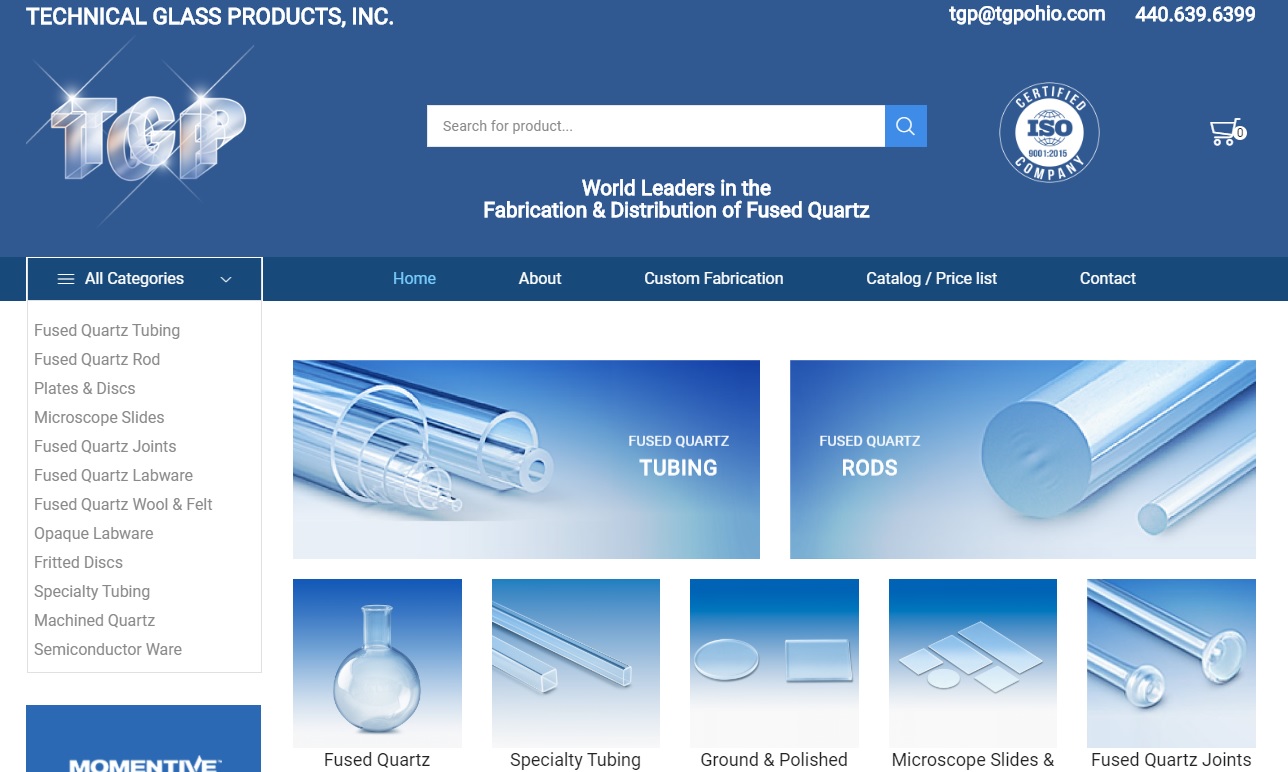

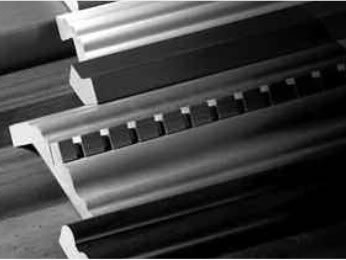 Adhesives
Adhesives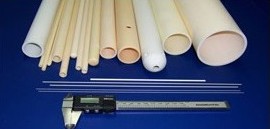 Alumina Ceramic
Alumina Ceramic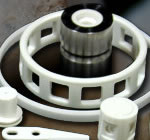 Ceramic
Ceramic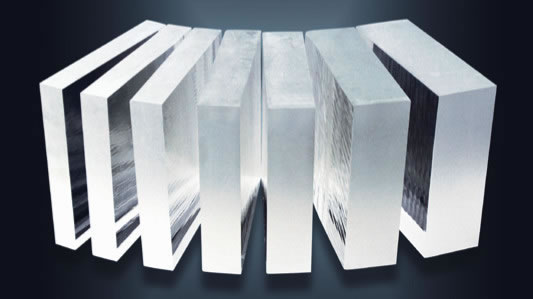 Glass
Glass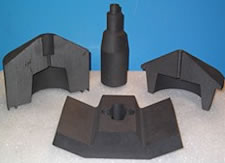 Graphite
Graphite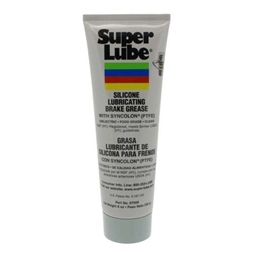 Lubricants
Lubricants Castings & Forgings
Castings & Forgings Bulk Material Handling
Bulk Material Handling Electrical & Electronic Components
Electrical & Electronic Components Flow Instrumentation
Flow Instrumentation Hardware
Hardware Material Handling Equipment
Material Handling Equipment Metal Cutting Services
Metal Cutting Services Metal Forming Services
Metal Forming Services Metal Suppliers
Metal Suppliers Motion Control Products
Motion Control Products Plant & Facility Equipment
Plant & Facility Equipment Plant & Facility Supplies
Plant & Facility Supplies Plastic Molding Processes
Plastic Molding Processes Pumps & Valves
Pumps & Valves Recycling Equipment
Recycling Equipment Rubber Products & Services
Rubber Products & Services